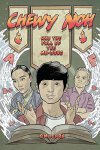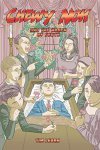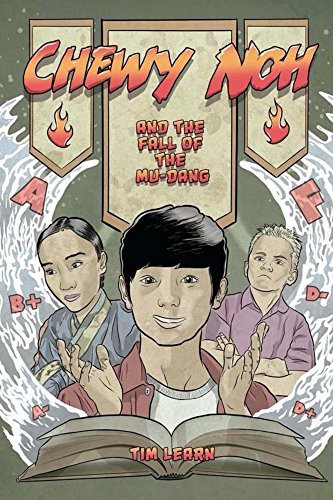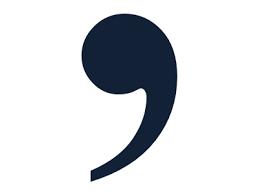Tim Learn's Blog, page 10
December 6, 2016
Top Re-read of the Month: Johnny Got His Gun
Dalton Trumbo’s
Johnny Got His Gun
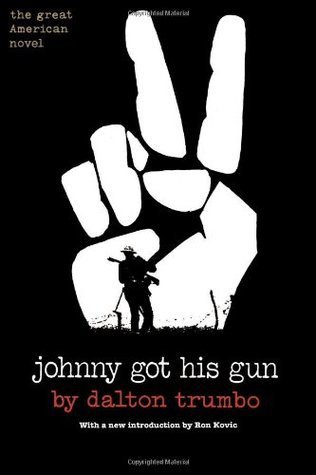
I do many books with my students and always find it interesting to go through a book I’ve read before, especially one from a long time ago. Not always do I get sucked back into my reread in exactly the same fashion as I did the first time around, but sometimes—and it’s an extremely rare sometimes—I end up feeling the same magical experience again. At those times, it’s amazing, and Dalton Trumbo’s anti-war classic does exactly that.
Although many out there may not know who he is, Dalton Trumbo wrote this book before coming famous for being banned in Hollywood as a communist. Despite this reputation, it didn’t hinder his creativity. He kept producing and writing, except under names. He even won Academy Awards for two of his movie, one being ‘Roman Holiday,’ though others accept the honor.

Yes, he wrote in the bathtub.
Knowing all of this can give you a richer read, seeing the very strong communist notions in the book about the little guy being trounced by the bigger one, but in no way would I say this encapsulates the whole read. Besides, who doesn’t love an underdog?
The next most compelling aspect is the fact that it is routinely banned whenever a war starts. Korean War. Vietnam War. The first Iraq War. Only the second one, did it not find itself banned, and for that reason maybe, it resurfaced with support from Cindy Sheehan—a loud detractor of Bush.
If all of that’s not enough, then just read it—the story about a boy who has his arms, legs, and face blown off by a bomb. In essence, he’s left with nothing more than the sense of touch, and that’s it, and yet he finds a way to get his message out in simple, strong, gut-wrenching language. For anyone who has yet to read any stream of consciousness material, this book is a good place to start. Check out the last paragraph of the book, it’s mind-blowing.
Put the guns into our hands and we will use them. Give us the slogans and we will turn them into realities. Sing the battle hymns and we will take them up where you left off. Not one not ten not ten thousand not a million not ten millions not a hundred millions but a billion two billions of us all the people of the world we will have the slogans and we will have the hymns and we will have the guns and we will use them and we will live. Make no mistake of it we will live. We will be alive and we will walk and talk and eat and sing and laugh and feel and love and bear our children in tranquillity in security in decency in peace. You plan the wars you masters of men plan the wars and point the way and we will point the gun.
If that doesn’t get you going, then I don’t know what will.


December 4, 2016
Top Three Words of Advice to New Self-publishing Authors
Top Three Words of Advice to New Self-publishing Authors
It’s been a year now since I started self-publishing. I’ve learned a lot, and the first thing I’d tell myself a year ago is “Don’t do it.” But I’d do it anyways. Why? You learn a lot.
Self-publishing is hard. Any blogger with their book prominently placed on their site will tell you the same. Self-publishing is lonely and without support—unless you have it built in, ie. a voice inside you or a strong spouse. If anything, I feel self-publishing is like the freshman year of college: it weeds out those who don’t plan on staying until the end.
In that same way, it vets you. You begin to see the trends and, with kind and sometimes not so kind words from others, you pick up your weaknesses. At first, many optimists claimed self-publishing would rid the world of the gatekeepers, the traditional publishers. That clearly is not true. But, if anything, I have a feeling it will begin to replace MFA programs. And the best part: self-publishing is virtually free.
Every little notion and detail about publishing, both traditional and self, abound on the web on the very same blogs of authors who are, or aren’t, self-publishing. MFA programs will soon have their work cut out for them. To add to this, and somewhat reiterate, I’ve decided to compose the top three things I’ve learned so far.
Here goes:
1) There is no magic route to getting people to buy your book!
This comes after seeing the plethora of scams that target guilible authors with messages claiming that they can boost book sales. The deal—pay a certain amount and they blast your book around the web.
Simply put: this doesn’t work. Authors always talk about platforms. Platforms are used to announce and spread word of your book, but they are used based on relationships built with other budding writers or loyal readers. And, usually, they work hand-in-hand.
Recently, an author I reviewed sent me a message saying that he was about to release a new book and asked if I’d review it before his release. I said I’d love to and did so. In this way, I sent out a good vibe about his book on my own, having it not tied to any money given to me. It was genuine. As a result, my blog visits went up as well, not to mention page searches for my own book.
Twitter and Facebook blasts don’t do this. If anything, they are the equivalent of infomercials, and as far as I know, not to many avid-readers are big into them.
2) Do not buy ad space
This is based off my own experience with using Goodreads’ ad space option. I decided to drop twenty-five dollars to see what results come out of it. Later, I found a Facebook option that did something similar but for a much heftier price tag. I was wise to have used the Goodreads one first because…it sucked!
The way it works is on each Goodreads page, down on the right hand side, there’s a little box that updates with new books every time the page resets. This is their attempt at marketing. I’ve been on Goodreads enough, yet never even noticed it there. I was unaware of it when I tried and clearly it was a waste.
This somewhat falls under the same heading as above, but deserves it’s own number in the list because many people, myself included, think these bigger entities—Amazon, Goodreads, Facebook—might actually know what their doing and talking about. Wrong! Ads are ads—they are a way to make money. That’s it. So don’t buy into it.
3) Book giveaways don’t work so much either
After starting the aforementioned Goodreads ad, I thought maybe a giveaway wouldn’t be so bad either. The Goodreads prompt promised 80% response rate for reviews from their giveaways. So I thought why not. Reviews could mean more people will give my book a shot. Wrong!
First off, their ‘80%’ is misleading. I did my giveaway six months ago for ten books. Since then, I have received three reviews. You don’t need to be a math whiz, but that’s only 30%, and there’s the catch! Goodreads never said over what timeline those reviews would come in. A year from now I could find another one has been posted. People don’t all read books at the same speed or in the order at which they received them. So on a long enough timeline, Goodreads end up right. I just don’t know if I want to wait that long.
Also, as another blogger pointed out, during giveaways participants click to join and by doing so put your book in their ‘to-read’ list. This doesn’t mean they will read it. On top of this, the most activity comes at the beginning of the giveaway—when it’s at the top of the list—and near the end of the giveaway. Any time in between is wasted. Therefore, if you do a giveaway the best length is not two or three weeks but two or three days, and as the review rate is lower than expected, doing one book at a time may actually increase your viewability.
Besides that, if there’s anything else you guys can think of that I missed, please add it. Someone else may find it extremely enlightening. Thanks!


December 2, 2016
Need a series to read!!!!!
November 30, 2016
End of November
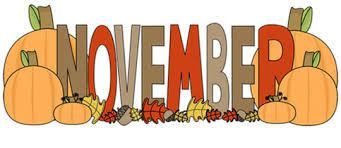
End of November Review
As always, when something new jumps into my schedule, other items are sacrificed for the time and attention. So it is this month as well.
Books Read and/or Reviewed

First, I jumped into Jay Asher’s ‘13 Reasons Why.’ It’s another YA book about suicide, coming right on the heels of me reading All the Bright Places. I’d have to say this one felt much less trying. The situations felt more teenage-like, and not grandiose like the former. On top of that, it had a compelling way of being told with thirteen sides of tapes where Hannah tells her story and why she killed herself. Some have said it was quite vindictive—Hannah’s motives—but sometimes, suicidal people are. Revenge in death is not too hard to fathom.
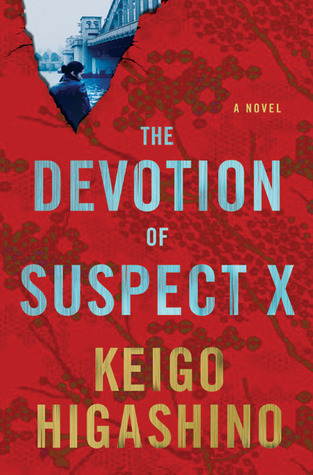
Then I read ‘The Devotion of Suspect X.’ This is by the hugely popular Japanese author Keigo Higashino. He’s like the Japanese version of Tom Clancy, and I’d have to say it was fun and impressive. Many of his books are murder mysteries, and they always have a twist at the end, much like this one, that is unexpected. Add to this, you get to see a little bit of Japanese culture—like the fact that most criminals confess—they say around 90%, shockingly. All in all, it was fun, but nothing gripping like Murakami used to be.
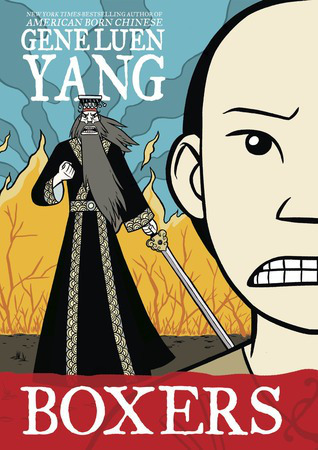
Following that, I read ‘Boxers,’ supposedly the first part in the series, having read the second part last month. I wasn’t sure what order to read it in, but with my mistake, I feel it was better to read part two, first. It filled in the gaps you find in the main book. With that, I enjoyed the history lesson masked as a graphic novel. It was creative and fun, but did lack the unique story-telling that was created in American Born Chinese.

From there, I dove into ‘People Who Eat Darkness.’ Many have told me to read this for quite some time now, and I do enjoy a good ‘real-crime’ story. However, despite the intriguing lead-in, the book quickly got bogged down in the details that really didn’t feel as relevant as the main tale should have been. I understood the delving in Japanese culture to explain the jobs available there to western women and the way Japanese men live with this social pressure, but a lot of it dealt with Blackman’s father and the struggles between him and the mother, which felt drawn out. In the end, it was terrifying, but too long.
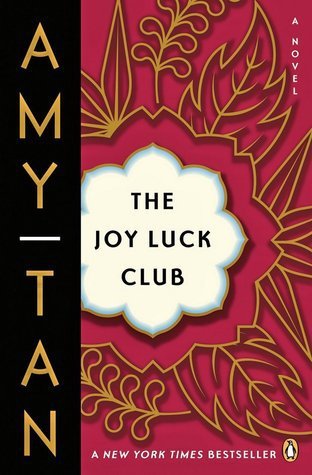
Strangely, I then read ‘Joy Luck Club.’ This was a reread, as I had first read it in High School. Despite that, I have to admit I remembered very little, unlike the book I recall reading right before it in school, Bradbury’s Illustrated Man. This time around, I did enjoy it more and found the strange connections Tan made between daughter and mother unique and interesting. The hardest part is distinguishing whose story was what as the narrative would indiscriminately jump from one daughter to another mother and so on. Beyond that, it was wonderful, especially being her first novel.

I ended the month with a Kindle single by the author of ‘Yoga Store Murder,’ called ‘Killer in the Family.’ It follows the horrific, true-story of Bradford Bishop who one night decided to slaughter his wife, mother, and three sons. Then he drove miles away to bury them and after that disappear for over 38 years. Still to this day, he has not been found. He is now on America’s Most Wanted list and is considered the longest on-the-run killer in history. The fact that he is still out there, at the age of 80, is chilling, but this little read was nowhere near as good as the author’s prior book, stated above.
Book Reviews Received
I have a feeling after this year this section of my monthly reports will be non-existent. Oh well!
Progress on 2016 goals
Finish Chewy 5: Done!—75,000 words
Read ‘The Recognitions’: Done!
Compiling my Editing book: Done!—30,000 words
Finish ‘All the Things in the Unknown World’: Done!—85,000 words
Send ATTITUW out to publishers: Sent out to 10 publishers
Start ‘Crasher’: With this month being NaNoWriMo, I began my next book with the hopes of getting a large chunk done. Happily I did so, finishing 25,000 words, essentially the first part of three.
Next Month’s Agenda
One month left. The year’s gone by fast. I hope to add another 25,000 to ‘Crasher,’ so as to make it easily finished in the new year. Unlike last month, where I sent ATTITUW out to few publishers and agents, I’d like to up that number before the new year starts. As for my reading schedule, I’ve read my 75 promised books for Goodreads, but wouldn’t mind putting a few more on the score board before everything wraps up. I expect, at the end, to have around 80. We’ll see.


November 28, 2016
Top Three Ways to Strengthen a Scene
Top Three Ways to Strengthen a Scene
One of the self-published books I’m reading now reminded me of these little tricks that took me an ungodly time to figure out and use in a more efficient manner. Many times, after you’ve written a particular scene, some inflexible part of our brain only wants to fix and edit the lines as they are. In this way, the writing-hacks below are a good way to shake things up and tighten a loose, dragging scene. So here goes.
1) Cut
This actually has many different meanings, so let me chop it down into easier to digest pieces.
a) beginnings
Far too often, after writing the scene, we need to focus on how it opens. If it starts out weak, the reader will drag and skim. Authors don’t want this. So to fix it, the best thing to do is chop a little of the beginning and this makes complete sense. Usually, when I start writing a scene, I have a particular goal that needs to be achieved but no idea in what way I want it to come out. Later, in the editing process, I save the reader a lot by just chopping off a paragraph or two, getting right to the meat of what’s going on.
b) dialogue
Like above, most dialogue when it hits the page, comes at a time when the writing side of my brain hasn’t kicked in and started focusing. For that reason, skimming past the first couple lines not only gets to the exciting part, but also leaves a little of the beginning of the dialogue up to the reader to fill in.
c) endings
This time, the notion is completely the opposite. By the end of a scene, your writing brain should be churning outs lines with little prodding, but unfortunately, it usually isn’t the best judge. Thus, while re-reading, locating where the most poignant part of the scene lands is crucial. Once you find it, the best thing to do is to let a little bit more flow, and then cut the slack. If you drag an ending out, the reader will have nothing left to look forward to in the next chapter, and will keep leaving your book without that sense of urgency that causes so many of us to read through the night.
2) Rearrange
This one’s simple but took me forever to get the hang off. When going back through a chapter, check what order the events are presented. Though it may seem logical, and anyone who reads it may understand it clearly, that doesn’t mean it is laid out in the best way. Sometimes moving one part of dialogue forward, or one emotional explosion till later allows the flow of the chapter to keep the readers attention hooked. Too much at one point and too little in another loses your audience just as much as non-stop hitting them in the face with big action. Chapters and books should have a little roller-coaster feel to them. The ups-and-downs make it worthwhile, even in scenes.
3) Cut
Wait! Didn’t you already have this one? Yes, but this is different. Sometimes, the best thing I found to do is to chop a certain aspect out of the scene or leave something unsaid but communicated between characters through body language. This tightens the scene as well because too much dialogue can start lending a ‘talk-heads’ like element to it, and this is just as much a reader killer as well.
I use all of these regularly now and am still shocked (embarrassed?) that I had no clue about them before. Due to this, if you have a writing/editing-hack that works wonders for you—please, please, please share! More tricks in the bag always help.


November 25, 2016
To Beat a Grammarian: Commas (Part One)
To Beat a Grammarian: Commas (Part One)
I cannot vent my frustration enough with these kinds of people! You know them—grammar Nazis. They follow the rules rigidly, and should a rule change, they ignore it vehemently, basing their adamancy on it not coinciding with some near-religious text they once read. In other words, zealots!
But they exist. And to draw a quick analogy: it’s like leaning over to your friend and saying, “Hey, look at that pretty girl over there,” only to have him lean back and say, “Yeah, but her chin sticks out too much, her eyelashes could be longer and, besides that, it’s much more customary not to wear that colored blouse this season.” Can’t the girl just be pretty?
So to combat them, I’ve decided to present little details every so often that I’ve noticed are nit-picky aspects of a grammarian’s repertoire. These are the peccadillos that I’m slowly learning as my own writing or others are ripped apart by these fundamentalists.
So here we go:
Commas (Part One)
I teach in Korea, a place where commas aren’t so greatly used. The language is made to not need them. For this reason, I see many blatant misuses of a very commonly abused punctuation. My students will interchange it with periods because, well, they aren’t exactly sure how they’re different. I can fathom it a bit, but what I can’t grasp is other English teachers or writers doing the same. So here are a few basics.
Comma splices
This is when a comma is used instead of a period. As in this sentence:
I went home, my brother hit me.
Many have a problem with this because computer writing programs don’t even pick this up as incorrect. Right now, my Microsoft Word should be underlining it in green, but it doesn’t.
Correct form: I went home. My brother hit me.
Moving on, we come to the mythos of…CLARITY.
This one even the New Yorker claims as their sole reason behind any—and they have many—comma use. It makes sense in reason but can easily get out of hand at other times. However, I do agree with it in one area: subordinate clauses. If the subordinator begins the sentence, then the comma must come before the next subject to avoid confusion. Take a look below:
When I was eating the baby carrots fell to the floor.
At first glance, it seems you were eating the baby. Eventually, you realize the mistake and correct it in your head. One of my students actually wrote this, and he and I laughed greatly at it. Even though we can figure it out upon reading the whole sentence, this pause for understanding ruins the flow of the writing, and when it comes to fiction, momentum is key. Mistakes like that can derail even the most understanding of readers.
Correct form: When I was eating, the baby carrots fell to the floor.
The opposite of this should be observed as well. Too often, because of the rule above, writers feel a comma must be inserted anytime a subordinate is present, like below:
I went to the mall, because I wanted to see my friends.
Here, the comma is not needed. In fact, commas should be avoided around subordinates most of the time unless these subordinate phrases are interjected mid-sentence. The correct form is:
I went to the mall because I wanted to see my friends.
For now, that’s good. But, clearly, there will be more. Commas—and grammarians—have many issues. I hope to cover more at another time. If you have any comments so far, please, give me a heads up.
P.S. If you have any other examples—specifically hilarious ones—please drop them below as well. Thanks!


November 23, 2016
Need a series to read!!!!!
November 21, 2016
The Fine Line of Your Internal Writer
The Fine Line of Your Internal Writer

Having read many indie books now, I’ve noticed something. A voice, somewhere in my head, starts exploding in rage when these authors commit horrible crimes against me. All right, let me correct myself. This doesn’t only happen with indie books. I’ve encountered this voice while reading industry published books, watching movies, and even reading articles. At first, you might call me nit-picky or too sensitive, but, in fact, I wished others used and honed this side of themselves more.
This other side I’m referring to is your internal barometer for what is good and what is not. It tells you what had quality and what does not. We shouldn’t disregard it, and we shouldn’t placate and make reasons for the things we read, watch, take in. This voice inside is not only useful to enjoy others’ works, but unbelievably essential in determining the level of your own.
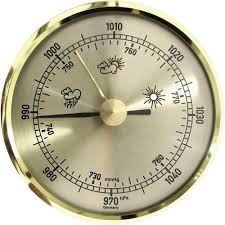
How does it work, though? How do I know if my inner voice is right or not?
Those are not easy questions. Some universities have year-long class addressing those very ideas, and usually come up with little to show. Somehow we just know naturally when something is good and bad. But I can tell you this: by reading as much as possible, your inner voice will get sharper and more exact. And by doing so, you can turn this laser of quality toward your work, burning off the fringe and ear-jerking language / dialog / characters that so often fill the pages of weak writing.
I cannot tell you how many books and movies (Marvel) have repelled me for their lack of story or character or dialog. This is not my first rant against it, but it all stems from the fact that I’ve seen what a little more time and a little more attention to what is good can make.
That being said, the best thing for all writers is to hone this trait in themselves. Soon you will see your work improve, strengthen, and with luck, get the praise it deserves.



November 18, 2016
On Reviews
A reprint of a long, classic post of mine….
On Reviews
Yesterday, I got my first low review. It haunted me the whole next day, and what surprised me was that I didn’t expect it to do so.
I had gotten lower reviews and middling reviews before. They are expected, and for the most part, desired. A good product, whether book or vacuum, will have people that don’t find it to their preference or standard. That’s a given. And a well-rounded collection of reviews will allow potential buyers get a better picture and understanding. Desiring all perfect scores is unrealistic—check out The Great Gatsby and Harry Potter. Some even give these modern day classics one star. If that’s so, then why is does this particular review burn?
My other reviews have targeted many different aspects of my book.
-bad topic, but compellingly written
-poorly written, but interesting topic
-immoral and questionable issues (x2)
As you can see, people often disagree with clashing points of view. This is how reviews work. Nobody has the same tastes. I understand this.
Even those attacking the grammar are easy to swallow. You know who I’m talking about: that special breed of grammarian that explodes at every misused or absent comma. But they don’t bother me. If they bother you, I suggest you check out this awesome post. It’ll make you think differently.
The thing I didn’t expect—and maybe nobody does—is when someone makes a personal comment about you, one that attacks you as a person, and not the thing you created. I certainly didn’t. I can see the leap of logic this person made, but I’m still unsure how to react.
In this instance, I can fully understand why some authors and writers flip out. It’s one thing to undermine one’s work, but criticizing one’s life can be rough. But, I guess, that’s what this is all about. If you want to be a person who creates something, this will happen. I just needed a kick in the face to realize it.

November 16, 2016
Chewy Noh–the Series!!!
So the series is done and out!!!!
It is a sad thing saying good bye to so many characters and storylines that I’ve gotten used to. I can still hear their voices and feel them running around. I hope all who’ve read them have enjoyed them because I enjoyed writing them. Thanks!!!
